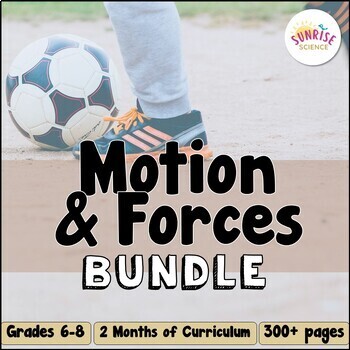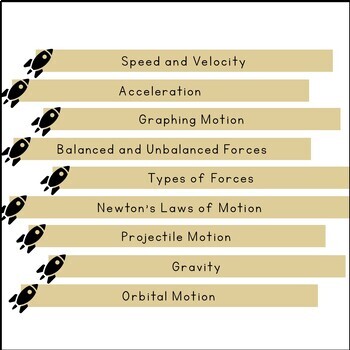Motion and Forces Unit | Speed Velocity Acceleration Newtons Laws Forces
- Zip
What educators are saying
Products in this Bundle (15)
showing 1-5 of 15 products
Bonus
Also included in
- This is a bundle of all of my resources for teaching physical science at the middle school level! These resources include a mix of Cornell Doodle Notes, labs, demonstrations, inquiry activities, self-paced digital 5E lessons, manipulatives, projects, pixel art review activities, and assessments. IPrice $297.00Original Price $384.06Save $87.06
Description
Looking for fun and engaging ways to teach your students about motion and forces? This Motion and Forces Unit is everything you'll need to teach about speed, velocity, and acceleration, forces and Newton's Laws of Motion, gravity, and orbital motion. Your students will LOVE learning about these topics in this format.
This bundle contains 18 activities to help you teach the following topics:
- Speed and Velocity
- Acceleration
- Graphing Motion
- Forces (balanced, unbalanced, net, specific forces)
- Newton's Laws of Motion
- Projectile Motion
- Gravity
- Orbital Motion
Assessments Included:
- 3 editable quizzes
- 1 editable test
- study guide with answer key
The Bonus Materials include a couple of mini-labs and a virtual graphing motion lab. An editable Pacing Guide is also included in the Bonus Folder!
Save 20% by purchasing these activities in this bundle ✨ Additionally, you will receive all future Motion and Forces resources for free once you purchase this bundle.
For more detailed information about the resources included, please check out the list of resources in the product preview, as well as the individual product previews!
Thanks for looking!
Sunrise Science




